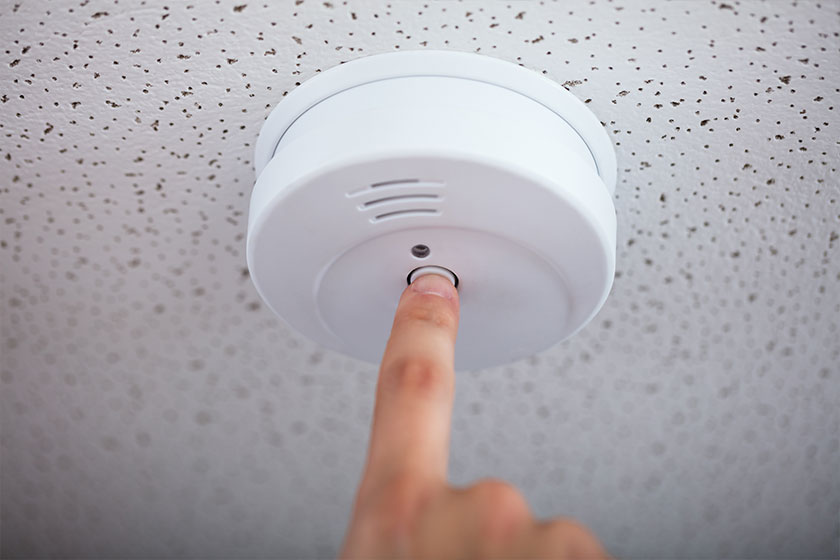10 Steps On How To Test Fire Detectors

Fire detectors are indispensable safety devices that play a critical role in safeguarding lives and properties. These devices are designed to detect the presence of smoke, heat, or flames, providing an early warning that can prevent catastrophic losses. However, their effectiveness hinges on their operational status, which can only be assured through regular testing. This guide provides you with a comprehensive overview of the steps necessary to test fire detectors. By adhering to these procedures, you can ensure the continuous reliability of your fire detection system, thereby maintaining a safe and secure environment in your home or workplace.
Inform Others
Before initiating the testing process, it is imperative to communicate with everyone in the vicinity that a fire alarm test is about to occur. This step is crucial in ensuring that all occupants are aware that the ensuing alarm is part of a planned test and not an actual emergency. Informing others helps prevent unnecessary panic, confusion, or disruption of activities. It is advisable to provide clear instructions on what to expect during the test and how long it is expected to last. This can be done through verbal announcements, emails, or signage, depending on the size and nature of the premises.
In addition to preventing panic, informing others also serves as an educational opportunity. It raises awareness about the importance of fire safety and the role of fire detectors in early warning systems. By involving occupants in the testing process, you can foster a culture of safety and encourage everyone to take an active role in maintaining a secure environment. Furthermore, it allows you to address any questions or concerns that individuals may have about the fire detection system, ensuring that everyone is well-informed and prepared in case of an actual fire emergency.
Check the Detector’s Physical Condition
Start by visually inspecting the fire detector. Look for any signs of physical damage, such as cracks, dents, or discoloration. Dust and debris can also accumulate on the device, which may hinder its performance. If you notice any issues, it’s best to address them before proceeding with the test.
Test the Battery
Most fire detectors are powered by batteries, so it’s essential to check their charge. For detectors with a battery indicator, ensure that it shows a full charge. If your detector doesn’t have an indicator, you can use a multimeter to test the battery’s voltage. Replace the batteries if they are low or if it’s been more than six months since the last replacement.
Use the Test Button
The majority of fire detectors come equipped with a test button. Press and hold this button for a few seconds to activate the alarm. The device should emit a loud, piercing sound. If the alarm doesn’t sound or is weak, replace the batteries and test again. If the issue persists, the detector may need to be replaced.
Conduct a Smoke Test
To ensure the detector’s sensitivity to smoke, you can perform a smoke test. Use a specialized smoke detector tester spray, available at most hardware stores. Spray the tester towards the detector from a distance of about 2 feet. The alarm should sound within a few seconds. If it doesn’t, the detector may need cleaning or replacement.
Clean the Detector
After testing, it’s a good idea to clean the detector to ensure its continued effectiveness. Use a soft brush or a can of compressed air to gently remove any dust or debris from the exterior and interior of the device. Avoid using water or any cleaning agents, as they can damage the detector’s sensitive components.
Test Interconnected Detectors
If you have a system of interconnected fire detectors, it’s important to test that the signal is transmitted between them. When one detector is activated, all connected detectors should sound an alarm. Test each detector individually to ensure that they all trigger the system.
Check the Expiration Date
Like any electronic device, fire detectors have a lifespan. Check the manufacturer’s date on the back of the detector. Most detectors need to be replaced every 10 years. If your detector is nearing or has surpassed this age, it’s time to install a new one.
Record the Test Results
Keep a record of each test, including the date, time, and any maintenance actions taken. This log can be useful for warranty purposes, insurance claims, or simply for your own peace of mind.
Schedule Regular Tests
Testing your fire detectors should be a regular part of your safety routine. It’s recommended to test them monthly and perform a more thorough inspection and cleaning annually. Set reminders to ensure you don’t forget this crucial task.
How Firesafetyalarms Can Help
At Fire Safety Alarms, we understand the importance of having reliable fire detection systems in place. We offer a wide range of fire detectors, including smoke detectors, heat detectors, and carbon monoxide detectors, to suit various needs and environments.
Our team of experts can assist you in selecting the right detectors for your home or business, ensuring optimal coverage and protection. We also provide installation services to ensure that your detectors are set up correctly and functioning as intended.
In addition to our products and services, we offer valuable resources and guidance on fire safety. Our blog features informative articles, tips, and best practices to help you stay informed and prepared. Whether you’re looking to install new fire detectors or maintain your existing system, Fire Safety Alarms are here to support you every step of the way.
The significance of testing your fire detectors cannot be overstated. It is an essential practice that guarantees the functionality and efficacy of your fire detection system, thereby ensuring a secure and protected environment. By diligently following the outlined steps, you can ascertain that your detectors are in optimal working condition, poised to provide timely warnings in the event of a fire. It’s important to remember that regular testing and maintenance form the cornerstone of a reliable fire detection system. Commit to this routine, and you will be taking a proactive step towards safeguarding lives and properties from the devastating impact of fires.
At Fire Safety Alarms, we’re committed to helping you protect what matters most. Our products, services, and resources are designed to provide you with the tools and knowledge you need to keep your home or business safe from fire hazards. Stay vigilant, stay informed, and trust Fire Safety Alarms to be your partner in fire safety.
